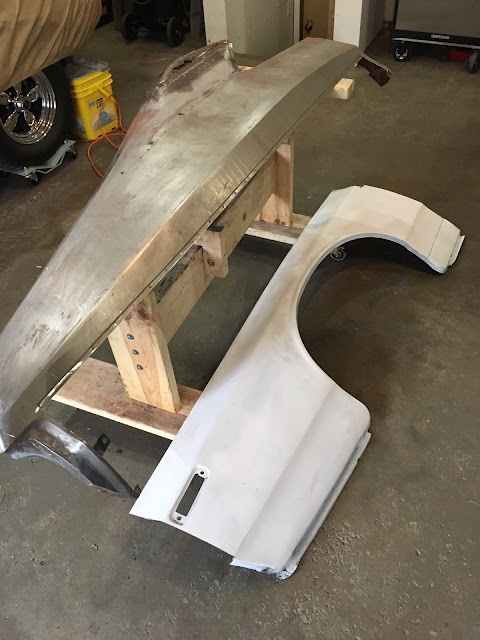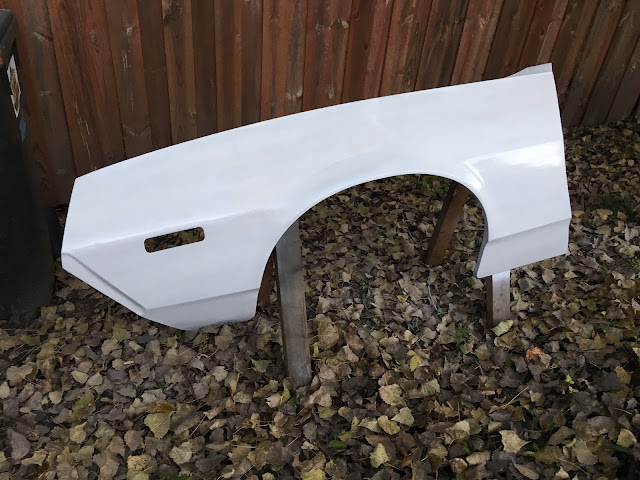Thursday, March 18, 2021
Punky Manor - Vintage Stock Car - Tribute Build
Sunday, March 14, 2021
Punky Manor - Vintage Stock Car - Tribute Build
Body & Paint - Part 3
The Torino's body was in rough condition pretty much all the way around the car. The drivers side rear quarter looked to be repairable for the most. That was before we tried unloading the car into a shed for short term (nearly two years) storage.
I had rented a car trailer from U-haul to move the race car from Racine, Wisconsin up to Menomonie, Wisconsin. We were trying to roll the car off the trailer with absolutely no brakes and not much for steering. We put some wood blocks behind the race car to stop it but it missed those and slammed into a large wood beam. And that is the reason I had to replace the only good panel on the car.
In the picture below you can see the large wood beam directly behind the rear of the car. The other picture shows the damage done in an area that is not easy to pull out or repair.
I was able to find the upper rear part of the right side rear quarter at a Ford yard down in Hastings, MN.
The patch panel looked pretty rough, but the actual area I needed looked like it was still all metal.
I started the left rear quarter repair by marking and cutting off the damaged area. Then I used an air powered flange tool to create a lip for the patch to fit into. Then the whole thing is tack welded inside and out. Once again, fiberglass reinforced bondo goes down first. Then I finish with multiple thin layers of lightweight body filler and glazing putty. Most all of the raw metal body parts were coated with self-etching primer before a coat of flat white primer went down.
After the drivers side was opened up I needed to start test fitting the new door and fender and figure out how they were going to fit, and more importantly, how to attached them.
After making some progress on the drivers side, I decided to move on over to the problem side of the car. I must have built up a little confidence starting on the "easy" side, because I went ahead and cut the whole passenger side off.
You can't see it in the above pictures very well but both of the rocker panels were rusted through and in really bad shape. I came across a reproduction pair of rockers and replaced them both.


















































